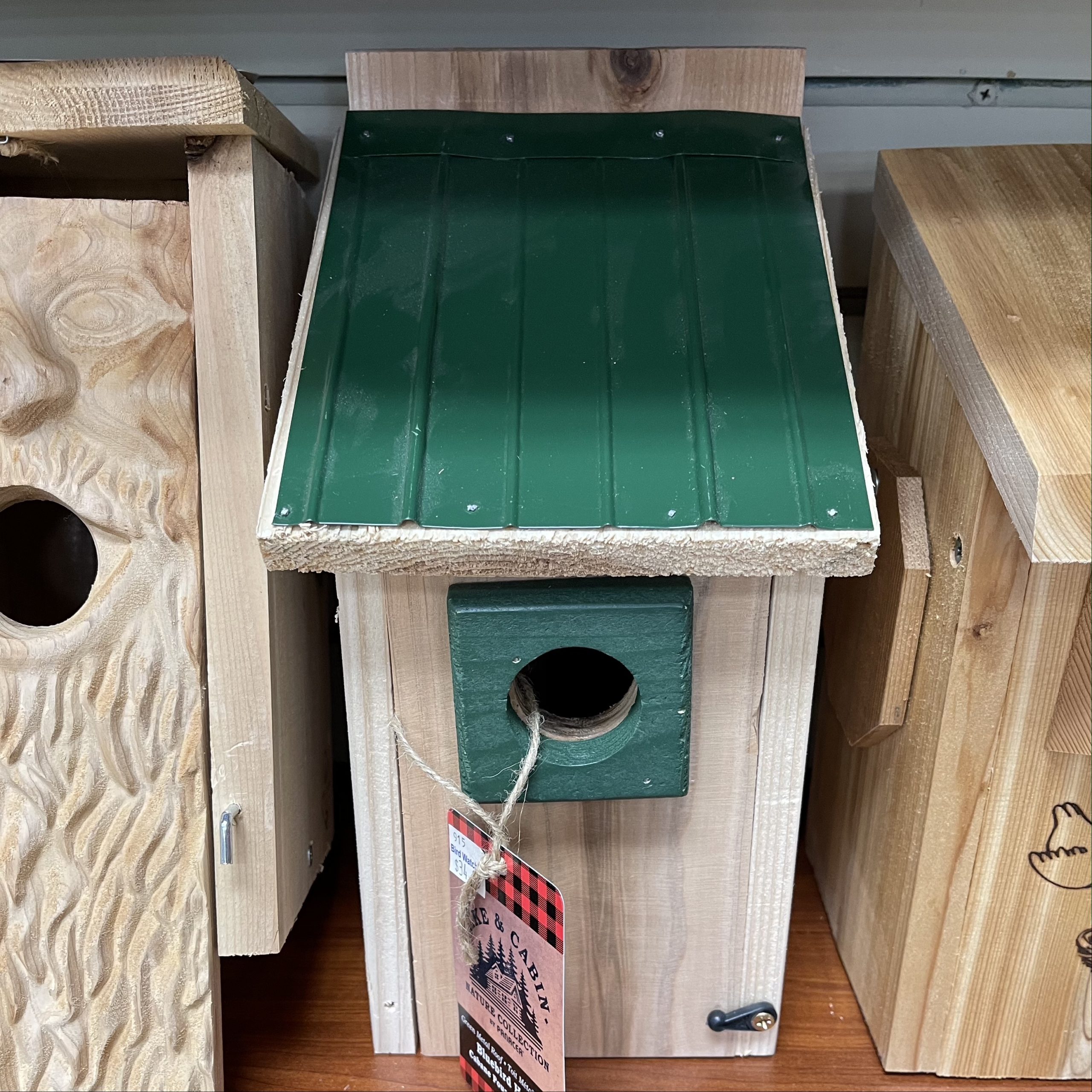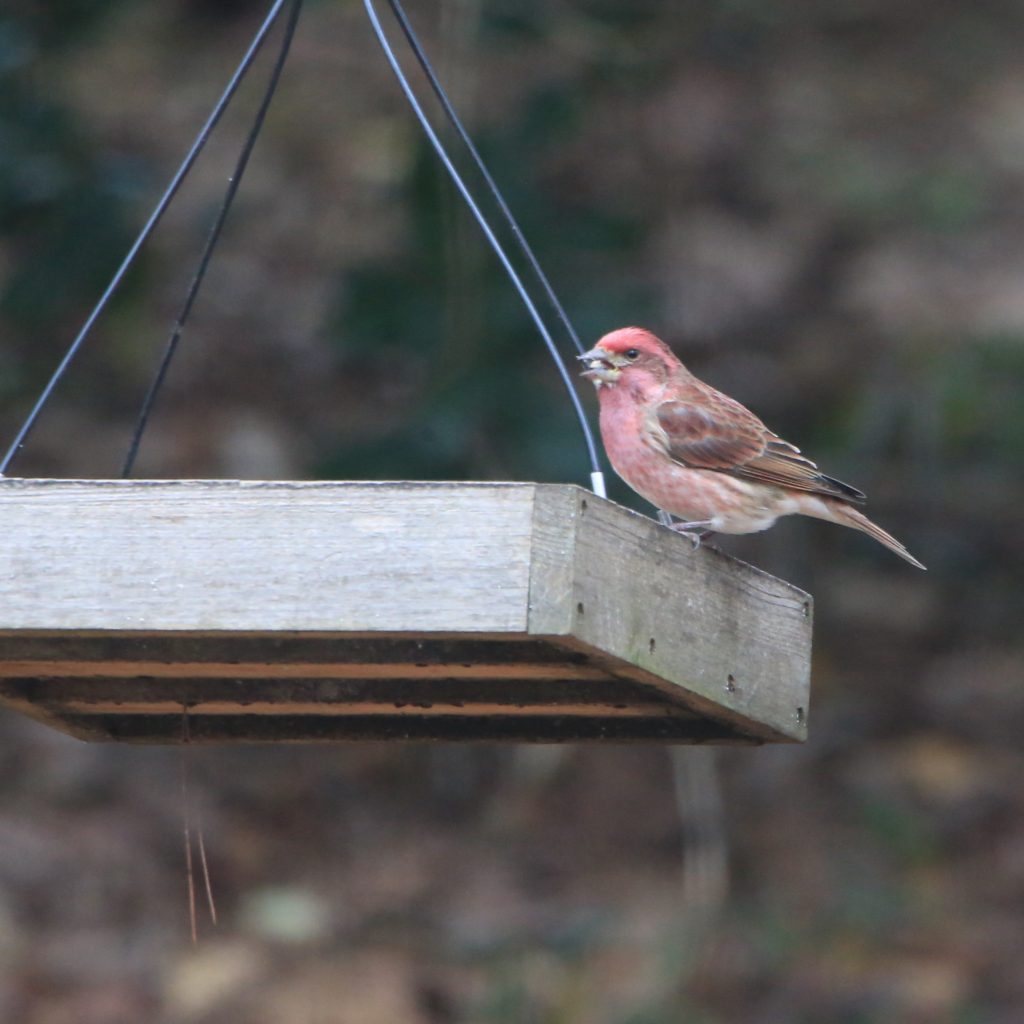
About Finches
The most broadly spread songbird in North America, the Finch birds are one of the most popular backyard birds. Currently, the entire population of these members of the Fringillidae family in North America is expected to be as large as one billion birds. In this article, you’ll learn how to build or buy the right Finch bird house.
It can be challenging to identify House Finches because the colorful males almost look similar to the Purple Finch. However, the plainer females resemble many different types of Finches or Sparrows. Understanding the essential field marks for these birds can help you identify them.
These birds are highly adaptable and can be seen in many habitats, from open woodlands to arid deserts and shrubby fields.
House Finches are singing birds that frequently sing and call at any time of year. Their song is a high, deep warble with an increasing buzz at last, while the usual common call is a sharp, raspy “cheeep” that can be done while in flight or perched.
These birds do not normally migrate, but they might wander searching for food, especially in winter when food sources decrease.
Finches are granivorous that consume seeds, including weed seeds, sunflower seeds, and grains primarily. Fruit, plant buds, and sap can also be part of their menu depending on the food abundance and season, and they may even tour Hummingbird feeders for a nectar sip.
About Finch Bird Houses
A Finch can nest in both bird houses and platforms apart from their more common choice: the trees. It is one of the major preferred garden birds except by few fruit farmers of California.
From an originally wide variety of habitats consisting of smaller wood stands, forest edges, and deserts, Finch bird houses are generally seen in cities and towns.
When building or buying a Finch bird house, one should select the correct materials. A simply decay-resistant wood such as redwood, cedar, or high-grade outer plywood is perfect. Simple-looking wooden bird house plans are more appealing to the birds; thus, paint is best avoided.
There are few common guidelines for the most suitable place of home. A house positioned on metal poles is less in danger to predators than a house hanging from tree limbs or attached to the trunks.
Do not put the habitat close to bird feeders. The entrance holes should be set in a direction where heating would not occur, particularly during extremely hot summers.
Building bird house kits for kids can be an excellent time to spend with the children. It can be an enjoyable way for kids to learn about nature, especially about the Finch.
A Finch residence built with the Finch in mind will give both birds and the watchers endless joy.
Size of Finch Bird Houses
The typical Finch bird house should have a dimension of 6 “x 6” floor, 6” inside the ceiling, and a 1 ½ inch diameter access hole positioned 4 ½ over the floor and airing opening.
A 2-inch entrance hole will bring hordes of House Sparrows, which is extremely threatening to the Finch. It is adequate to install the bird house on a post in the center of a backyard, just well out of range. Wood should be a minimum of ¾ inch as anything less will enable heat to form up, which is harmful to young birds.
An adequate Finch house has the proper ventilation and drainage. You can achieve good drainage through an extensive overhang on the cover and ¼ inch drain holes drilled in each corner of the floor.
Proper ventilation is achievable by drilling ½ inch vent holes at the top of each surface or an airing gap within the sides and roofs.
Predator protectors are an essential feature of a Finch habitat. That can be as easy as an extra piece of wood at the entrance hole to make more depth to the appearance of the box. It would make it more challenging for predators to strike into the Finch bird house.
Finch Bird House Management
To completely and safely clean and maintain a ‘used’ Finch bird house, here are some tips…
● Open the Finch house or partly disassemble it if needed for a good cleaning. Bird houses with swinging surfaces, hinged roofs, or loose fronts are the simplest to clean quickly and fully.
● Remove all old nesting stuff. You should put this material in a plastic bag to restrict the spreading of any parasites.
● Clean the house completely with a light bleach solution. Make sure to wipe all corners, the entry hole, ventilation, and drainage holes to remove all trash and contamination.
● Keep your Finch bird house kit in good sunlight for a few hours to dry it completely.
● Check the house for protruding nails, screws, and other dangers that can harm adult or young birds. Repair all issues to maintain the house safely.
● Verify that all drainage and ventilation holes are unobstructed. If required, drill extra holes to give additional ventilation or drainage to enhance the house.
● Make sure your nest houses and boxes are in perfect position as they were before.
Building or Buying Finch Bird Houses
If you are looking for building or buying a bird house for Finches, you must create a reliable environment allowing plenty of Finch-friendly resources to support a family of Finches flourish. Here are some of the Finch house plans you can buy or build.
● Larry’s House Finch Birdhouse Plans: According to Larry, Finches prefer a 6×6 inch floor with a 2-inch entry
hole at 4-inch above the floor. In this video, Larry uses an old wooden toolbox and converts it into a bird house. He proves that you don’t always need to begin from scratch.
● Hidden Creek Wooden Bird Houses: This beautiful Classic Wooden bird house gives a charming touch to
your outdoor garden or backyard. The house provides Finches with a secure place to construct a nest and raise young.
● Prevue Finch Nest Box: This perfect-looking nest box by Prevue pet products is made up of 100% natural and durable wood. One of the best gifts you can give to nature enthusiasts. The house will perfectly support finch to raise their young and keep predators out.
● Pine Bird House: All-natural and protected, this wooden Finch house plan is built from all-natural pine with no toxic chemicals and highlights a no-perch tin roof to stop large birds or predators from sitting on the roof.
Finch Nests in Bird Houses
Finch has a cup-shaped nest made of grasses, small roots, feathers, twigs, and leaves. They may make several nests before the actual nest where they will raise the young.
The House Finch is monogamous, and both couples can stay together throughout their entire life. Birds make nests in various sites, including ivy growing on structures and trees and artificial things such as window ledges.
House Finches have also been recognized to develop their nests in hanging planters, conifer trees, and even in the old nests of other species.
The female birds will incubate four to five eggs in two weeks, and the male will provide nesting materials and food to her.
After the eggs hatch, the female will raise her newborn for the initial days while the male will continue to provide food.
Young will leave the nest after 14 to 15 days but may still be supported by the male for some more time after that. The couples can raise three or more broods each season.
Final Words
You can set goals to bird-watch for these Finches after you have placed your bird house in your backyard and record your results.











